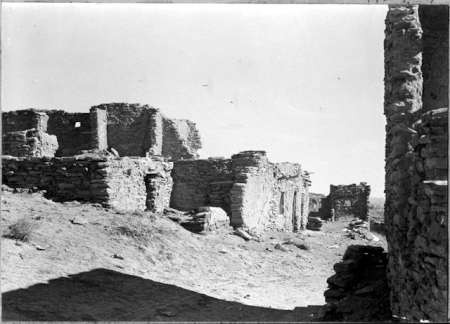
Timeline and Facts of Navajo County History
1500 – Present
1500’s
Today’s Navajo County area was inhabited by the Anasasai, pueblo dwelling people who made their home along the area’s waterways and mesas. Archeological sites today can be found throughout the county, where researchers have studied the lives of these “old people”. Oraibi, in the northeastern portion of the county is the oldest continuously inhabited town in the United States.
Then the Spaniards explored the area, at first seeking the legendary gold of the Seven Cities of Cibola. Next were the Spaniard missionaries who wanted to Christianize the Indians.
1680
With the Pueblo uprising, all Europeans were expelled from the land, ending the missionary work.
1824-1832
During this period trappers worked along the streams of what is now Arizona. The land was designated Mexican Territory, but these early trappers were said to have traveled far to the north and named a stream that flows into the Little Colorado River, Chevelon’s Fork. This area later became part of Navajo County.
1850
The United States Government sent Captain Lorenzo Sitgreaves of the U. S. Topographical Engineers across Northern Arizona to obtain more knowledge of its recently acquired territory. Captain Sitgreaves traveled along the Little Colorado and Chevelon’s Fork, and on west. The expedition mapped the region, as well as showed the practicability of a route thorough Arizona along the thirty-fifth parallel that later wagon trails, the railroad, and paved roads followed.
1853
Lt. A. W. Whipple of the U.S. Topographical Engineers traveled the thirty-fifth parallel to explore all land along the parallel for a practical and economical route for a railroad from the Mississippi River to the Pacific Ocean.
1857
Lieutenant Edward F. Beale lead the next expedition across Northern Arizona to establish a wagon trail along the parallel, crossing the Rio Puerco just above its joining the Little Colorado River, the spot later called Horsehead Crossing. He following the river west, crossing it at Sunset Crossing. The wagon trail he mapped out is close to the same route that became Route 66 decades later.
1863
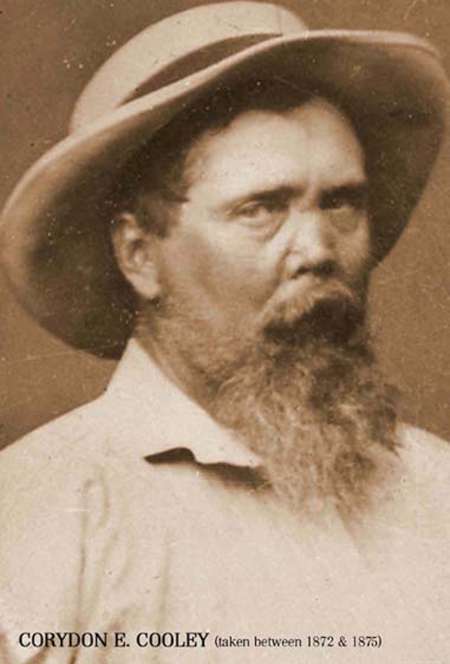
On February 24th President Abraham Lincoln signed a bill that created the Territory of Arizona. Four counties were established in 1864, including Yavapai, which then encompassed today’s Apache and Navajo counties.
A prospecting expedition party included Berado Freyes, and the group crossed the Rio Puerco above the Little Colorado River. It is said that Juan Padilla in the 1870s located just east of the crossing and put up a saloon. When Freyes returned to the crossing he managed a saloon on the north side of the river, but other historical accounts place Frayre at the crossing in 1876 as the merchant and storekeeper. A second store was owned by Jerry Hayward. H.H. Scorse was another businessman at Horsehead Crossing in 1878, and in 1881 he moved his general merchandise store to Holbrook.
1872
The first settlers, C. E. Cooley and Marion Clark arrived in Show Low. Later they decided the area had room for only one of them and a poker game was played to decide who would move on. Cooley drew the last card and Clark said “if you show low, you win.” Cooley turned the deuce of clubs, and Show Low was thus named.
1876
Early Morman settlers migrating from Utah used the Sunset and Horsehead Crossings to reach the Little Colorado River Valley. Four companies of Mormon settlers split up at the Sunset Crossing: Lot Smith established a camp, Sunset, on the east side of the crossing; Ballanger’s camp, Brigham City, was on the west side of the crossing; Lake’s camp, Obed, was established about 28 miles to the east on the south side of the Little Colorado River; and Allen’s camp, St. Joseph, was on the north side of the river.Woodruff, about 12 miles upriver from Horsehead Crossing, was originally settled in 1870 by Luther Martin, a non-Mormon. In 1876 he sold his claim to the church and in 1887, Ammon Tenney settled in the area. Originally called Tenney’s Settlement, it was renamed Woodruff in 1878.These early settlers built dams to irrigate their crops, but it was a struggle, because the dams would be washed away by the Little Colorado waters.
1877
There were about 400 people living in the Arizona settlements. Allen’s Camp raised 40 acres of corn and 1,000 in wheat. At Horsehead Crossing, the fifth settlement, the stores of Berado Freyes and Jerry Hayward were in operation.
1878
Taylor was established by James Pearce and named for John Taylor, the president of the Mormon Church. A few months later Snowflake became a settlement at the site of the Stinson Ranch. It was named after Erastus Snow and William Jordan Flake.
1879
The territorial legislators created Apache County and named Snowflake as the county seat. This designation was later changed to Springerville, and finally to St. Johns in 1882.
1880
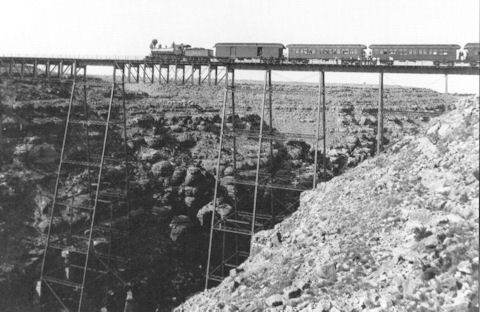
The territorial legislators created Apache County and named Snowflake as the county seat. This designation was later changed to Springerville, and finally to St. Johns in 1882.
1881
The Atchinson, Topeka & Santa Fe Railroad was under construction across Northern Arizona, and built a temporary station near Horsehead Crossing. In September this station was named Holbrook, after the railway’s chief engineer, Henry R. Holbrook.
1882
The railroad built a permanent station about two miles west of Horsehead Crossing and the name of Holbrook and businesses at the crossing were moved by the new station.
1884
The Aztec Land and Cattle Company was created to utilize the right-of-way along the new railroad across Northern Arizona. More that 33,000 head of cattle eventually grazed on a million acres along the rail line. The cowboys tending to the cattle were known as the Hashknife Outfit because their brand resembled the knife used by the chuck wagon cooks.
One of the first of Fred Harvey’s Restaurants was opened in Holbrook to serve train passengers. His last Harvey House, was the La Posada in Winslow, that opened in 1930.
1885
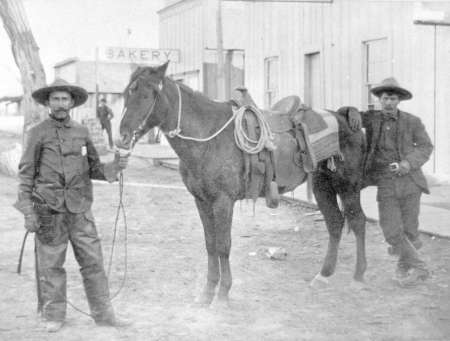
Of the four original settlements along the Little Colorado River, only St. Joseph (renamed Joseph City in 1923) remained.
1886
The Pleasant Valley War over sheep-cattle was in full scale in Tonto Basin, and rustling was common. Outlaws, chased out of Texas, came to the Holbrook area, and signed on with the Hashknife Outfit under assumed names.
1887
Commodore Perry Owens, the new Apache County Sheriff, was elected by people wanting to stop lawless activities such as cattle rustling and murder. On September 4, 1887 he rode into Holbrook to serve a warrant on Andy Cooper for horse stealing. This resulted in a bloody gunfight, forever recorded in history.
1890
A U. S. Post Office opened in Heber, which was settled by pioneers in 1876.
1895
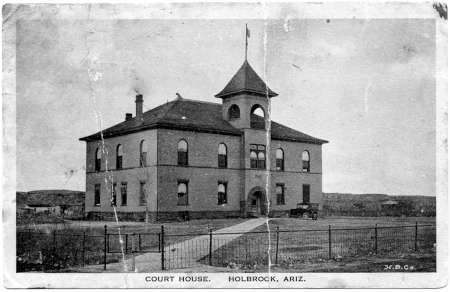
Navajo County was formed on March 21st as the final act of the Territorial Assembly before it adjourned at midnight. The county seat was determined to be in Holbrook, following an election with a close majority vote for Holbrook over Winslow. Commodore Perry Owens was named the sheriff of the new county.
1898
Navajo County voters approved a bond issue for $15,000 to build a county courthouse and jail at the county seat. The jail alone cost $3,000 and was shipped from St. Louis and set in place with the courthouse walls built up around it.
1900
George Smiley was convicted of murder and hung at the Navajo County Courthouse on January 8. His hanging was originally scheduled for December 1899, but Sheriff Frank Wattron, with his weird sense of humor, had mailed out official invitations to the hanging. The newspaper picked up on the unusual invitation and President William McKinley took action, saying it was inappropriate to formally invite people to a hanging by engraved invitation. The hanging was then rescheduled. It is said that Smiley’s ghost still resides in the 113 year old courthouse.
1904
In January the Navajo County Board of Supervisors ordered that hereafter no dances will be held in the courthouse.
1906
The natural wonder of petrified wood and fossils were finally protected when President Theodore Roosevelt signing a bill naming the Petrified Forest National Monument that spans the Navajo and Apache Counties. The park continues to have a positive impact on Navajo County with hundreds of thousands of visitors viewing the park each year.
1907
The first telephone was installed in the Navajo County Courthouse.
1912
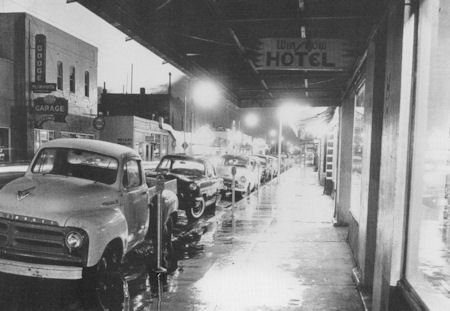
Statehood approved
1920s
The timber and cattle business were major industries in Navajo County. Tourism was also growing due to the advancement of automobiles. Communities like Holbrook and Joseph City, located along the National Old Trails Road, benefited from the influx of travelers across Navajo County. This impact was even greater when Route 66 was established in 1926.
The Apache Railway track from Holbrook to McNary was completed.
The Little Colorado River and other waterways in Navajo County were still a force to live and contend with. Irrigation needs in some communities and yearly flooding remained a challenge.
The bridge over the Little Colorado River was washed out in 1904, as well as collapsing river banks threatening homes in Holbrook. The county supervisors granted funds to reinforce the river bank along the north side of the waterway. In 1923 the north bank gave away again and great torrents of water pushed through several homes and the Apache Railway Company Bridge pilings were destroyed.
1930s
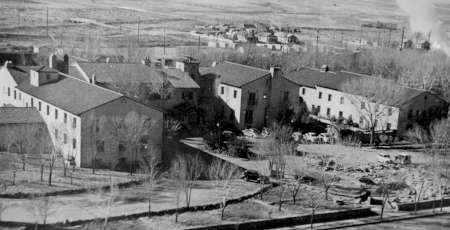
With the Great Depression came the great migration of people passing through Navajo County on Route 66, seeking a brighter future further West.
The nation’s Civil Works Administration had a positive impact for Navajo County. Public Work Projects include the quarried stone wall around the county courthouse, stone buildings at the courthouse and the county’s public works building, construction of the Rainbow Forest buildings at the Petrified Forest National Monument, as well as renovation of the Stone Tree House (later the Painted Desert Inn).
Fred Harvey’s La Posada Hotel in Winslow was designed by Mary Colter and served travelers until it closed in 1957. The Santa Fe Railroad housed it offices in the structure until 1994, when it was shuttered. A few years later, private business had renovated the grand building to its original glory, and reopened the hotel and its dining room.
A great deal of faith and hope was placed in the promise of oil in Navajo County in the Holbrook Oil Fields. Unfortunately, after a few years the speculation resulted in the realization that there was little or no oil to profitably pump out.
1940s
During the WWII years troop movements kept the railroads and highway full of men and equipment moving to coastal shipping points. In addition, the military used the airports in Holbrook and Winslow for training troops.
The Navajo Code Talkers’ contribution in WWII was not formally recognized until many years later.
1950s
Route 66 was enabling travelers to experience history in new ways. Americans wanted to travel and this route took them across country where they could experience sleeping in a wigwam (still offered today in Holbrook) on the way to the Grand Canyon.
The Navajo County Sheriff’s Hashknife Posse was organized as a search and rescue group. The posse held a yearly jamboree, and in 1958 it was decided to carry an invitation to attend the event to Gov. Paul Fannin by horseback, pony express style. This was the birth of the annual Hashknife Posse’s Pony Express Ride from Holbrook to Scottsdale. They received permission to use the original Hashknife brand as a posse logo. Their 54th ride will be held in 2012, the first week of February, under the longest continuous contract with the U.S. Postal Service to carry regulation mail by horseback.
1961
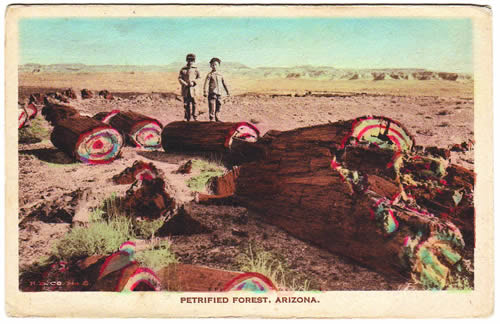
Southwest Forest Industries opens a paper mill in Snowflake.
1962
The Petrified Forest National Monument was designated as the Petrified Forest National Park and a new visitor’s center was dedicated at the north entrance of the park.
1974
Northland Pioneer Community College is established to bring education opportunities to Navajo County residents by maintaining campus sites and centers throughout the county, rather than one central campus.
1976
Navajo County moved into the new Navajo County Governmental Center located south of Holbrook on SR 77.
1977
The old Navajo County Courthouse was placed on the National Register of Historic Places.
1979
The Navajo County Historical Society, organized in 1969, was divided into four local branches for county communities.
1980
The Interstate 40 bypasses in Holbrook, Joseph City and Winslow officially ends the Route 66 era in Navajo County.
1981
The Navajo County Historical Society Museum was established and opened in the historic county courthouse.
1983
Holbrook hosted Arizona’s first lighted Christmas Parade
1984
An official Arizona Information Center was established in the historic county courthouse and the Holbrook Chamber of Commerce moved its operations into the building.
Pinetop and Lakeside, two unincorporated communities incorporated as Pinetop/Lakeside.
1986
The Arizona Department of Corrections opened a prison in Winslow, and added another unit in 1988, bringing the facility’s capacity to 1,292 beds.
1991
Pigs For Farmer John (PFFJ) established its operation in Snowflake.
1997
The four branches of the Navajo County Historical Society form their own community historical societies, with Holbrook retaining the original society name and the operation of the museum in the historical courthouse.
2011
Communities throughout Navajo County have significantly grown in recent decades and Navajo County’s population has reached more than 115,000. Almost 66 percent of Navajo County’s 9,949 miles is Native American reservation land. Individual and corporate ownership accounts for 18 percent; the U.S. Forest Service and U.S. Bureau of Land Management together control 9 percent; and the state of Arizona owns 5.9 percent. All of Navajo County is an Enterprise Zone.
2012
Navajo County residents are still ranching, farming, logging, mining and providing services for travelers. There is a growing summer resident population as well, as cabins and lodges are opened. The diversity of the county could be seen at the Navajo County Fair and rodeo held in September of each year as residents exhibited their products. 2012 marks the 81st year of the fair.
Today
Navajo County’s principal industries are tourism, coal mining, manufacturing, timber production and ranching.
Timelline prepared by the Navajo County Historical Society, January 2012.
